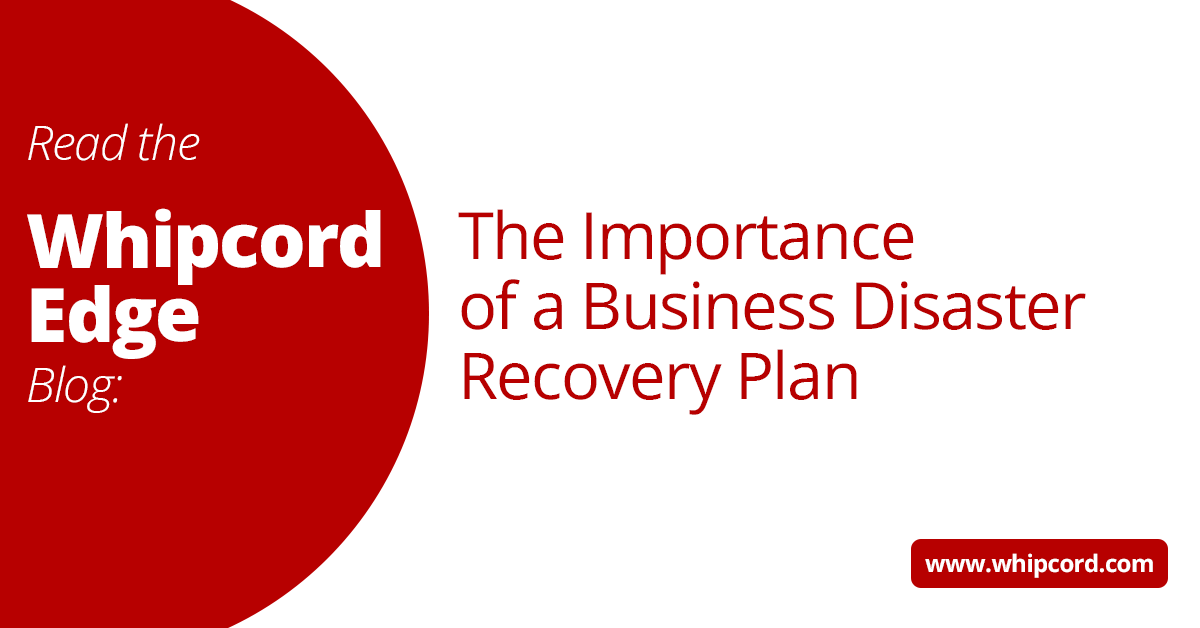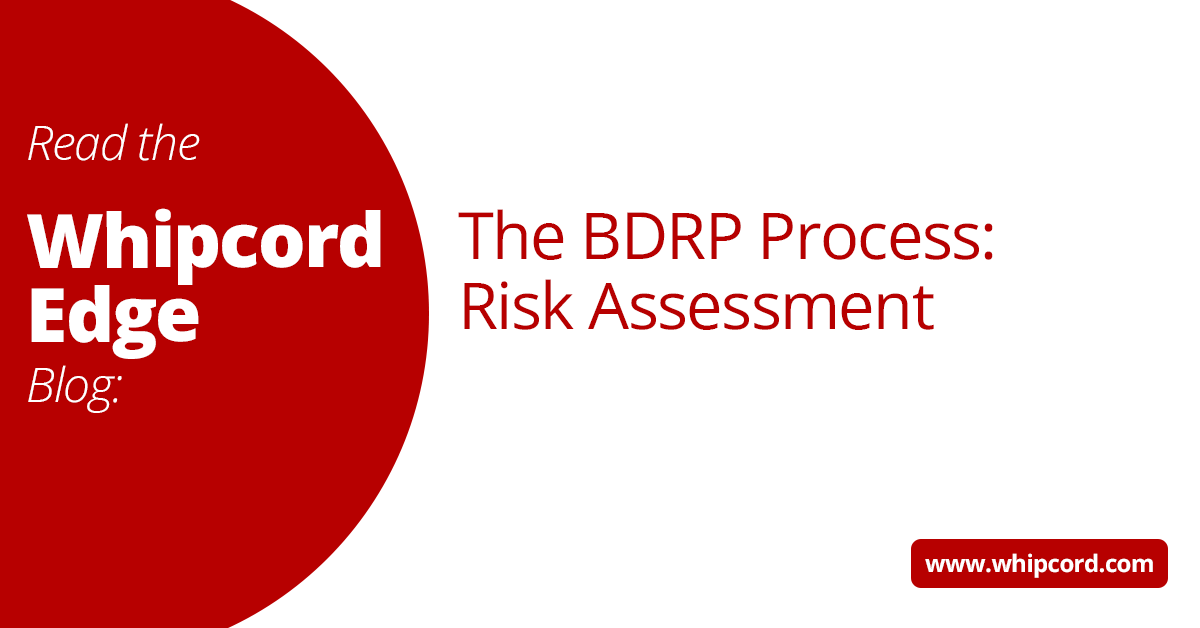This is the first of a series written by Guy Netaneli of 010 Data Protection. A partner and customer of Whipcord Edge, 010 helps business develop their plans and design technical solutions to support them.
A robust Business Disaster Recovery Plan (BDRP) is crucial for ensuring business continuity and safeguarding data against unforeseen events. We often encounter clients who lack a concrete plan, leaving their IT Teams to guess at technical requirements for Disaster Recovery as a Service (DRaaS) and Cloud Backup solutions. A well-developed plan is an important step in making sure your business is ready for unforeseen events.
Why a BDRP Matters
-
Minimizes Downtime
:A well-crafted BDRP reduces downtime, ensuring that critical business functions continue with minimal interruption.
-
Data Protection
It safeguards sensitive data against loss, corruption, or cyber-attacks, preserving the integrity and confidentiality of information. -
Regulatory Compliance
Many industries require adherence to strict data protection and recovery standards. A BDRP ensures compliance, avoiding legal and financial repercussions. -
Customer Trust
Demonstrating a commitment to data security and continuity boosts customer confidence and trust in your business.
The BDRP Process
-
Risk Assessment
Identify potential threats and vulnerabilities that could impact business operations.
-
Business Impact Analysis (BIA)
Determine the critical functions and processes that are essential for business continuity. -
Strategy Development
Create strategies for data backup, recovery, and communication to be implemented during a disaster. -
Plan Testing and Maintenance
Regularly test the plan to identify gaps and update it to address emerging threats and changes in the business environment.
Benefits to IT Teams
-
Clear Guidelines
Provides IT teams with a clear framework to follow, reducing guesswork and improving efficiency.
-
Resource Allocation
Helps in prioritizing resources and efforts towards critical areas that require immediate attention during a disaster. -
Enhanced Preparedness
Ensures IT teams are well-prepared to respond to incidents swiftly, minimizing impact and facilitating quicker recovery.
Benefits to Executive Leadership
-
Strategic Advantage
A robust BDRP positions the company as a leader in resilience, providing a competitive edge in the market.
-
Financial Stability
Minimizes the financial impact of disruptions by ensuring quick recovery and continuity of revenue-generating operations. -
Stakeholder Confidence
Demonstrates a commitment to stability and reliability, enhancing trust among investors, customers, and partners. -
Risk Management
Reduces the overall risk profile of the organization, potentially lowering insurance premiums and improving credit ratings.
A comprehensive BDRP is not just a technical requirement; it's a strategic necessity. It ensures that businesses are resilient in the face of adversity, protecting data, maintaining operations, and securing customer trust.
Start your journey towards a resilient future today. Contact us to learn more about our Disaster Recovery Planning services and how we can help you develop a robust plan tailored to your needs.
Guest Author
Guy Netaneli
-1.png?width=1092&height=792&name=logo%20(1092x792)-1.png)
%20copy(black%20letters).png?width=1092&height=792&name=logo%20(1092x792)%20copy(black%20letters).png)




.png?width=100&height=91&name=white%20logo%20(100x91).png)